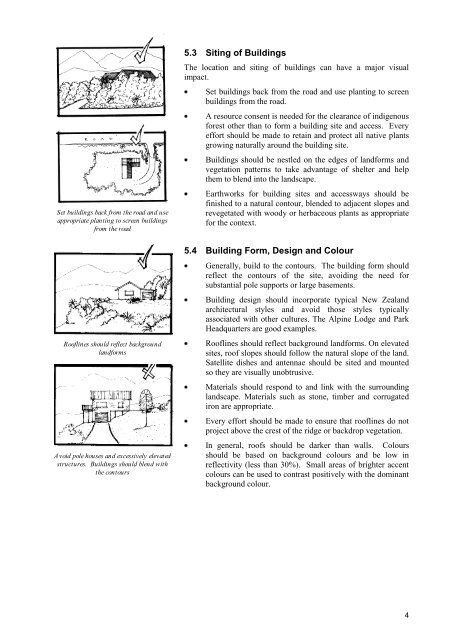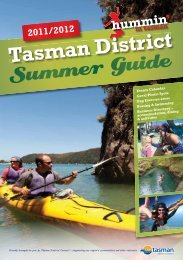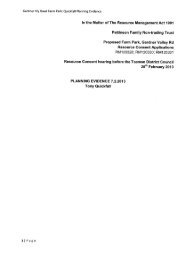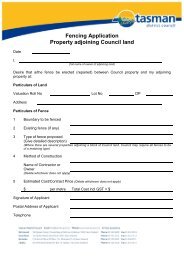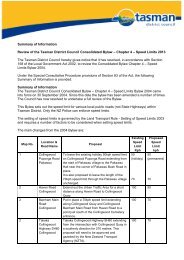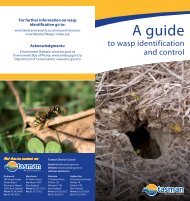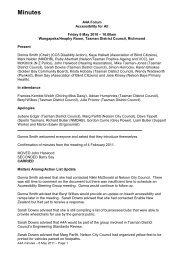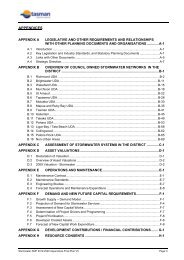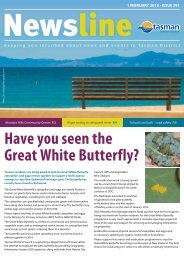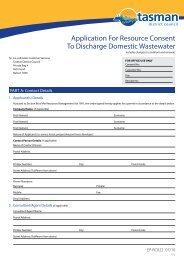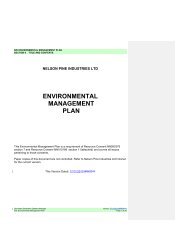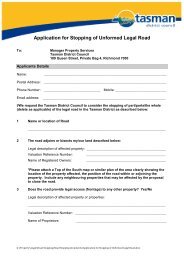St Arnaud - Tasman District Council
St Arnaud - Tasman District Council
St Arnaud - Tasman District Council
Create successful ePaper yourself
Turn your PDF publications into a flip-book with our unique Google optimized e-Paper software.
Set buildings back from the road and use<br />
appropriate planting to screen buildings<br />
from the road<br />
5.3 Siting of Buildings<br />
The location and siting of buildings can have a major visual<br />
impact.<br />
Set buildings back from the road and use planting to screen<br />
buildings from the road.<br />
A resource consent is needed for the clearance of indigenous<br />
forest other than to form a building site and access. Every<br />
effort should be made to retain and protect all native plants<br />
growing naturally around the building site.<br />
Buildings should be nestled on the edges of landforms and<br />
vegetation patterns to take advantage of shelter and help<br />
them to blend into the landscape.<br />
Earthworks for building sites and accessways should be<br />
finished to a natural contour, blended to adjacent slopes and<br />
revegetated with woody or herbaceous plants as appropriate<br />
for the context.<br />
Rooflines should reflect background<br />
landforms<br />
Avoid pole houses and excessively elevated<br />
structures. Buildings should blend with<br />
the contours<br />
5.4 Building Form, Design and Colour<br />
Generally, build to the contours. The building form should<br />
reflect the contours of the site, avoiding the need for<br />
substantial pole supports or large basements.<br />
Building design should incorporate typical New Zealand<br />
architectural styles and avoid those styles typically<br />
associated with other cultures. The Alpine Lodge and Park<br />
Headquarters are good examples.<br />
Rooflines should reflect background landforms. On elevated<br />
sites, roof slopes should follow the natural slope of the land.<br />
Satellite dishes and antennae should be sited and mounted<br />
so they are visually unobtrusive.<br />
Materials should respond to and link with the surrounding<br />
landscape. Materials such as stone, timber and corrugated<br />
iron are appropriate.<br />
Every effort should be made to ensure that rooflines do not<br />
project above the crest of the ridge or backdrop vegetation.<br />
In general, roofs should be darker than walls. Colours<br />
should be based on background colours and be low in<br />
reflectivity (less than 30%). Small areas of brighter accent<br />
colours can be used to contrast positively with the dominant<br />
background colour.<br />
4


